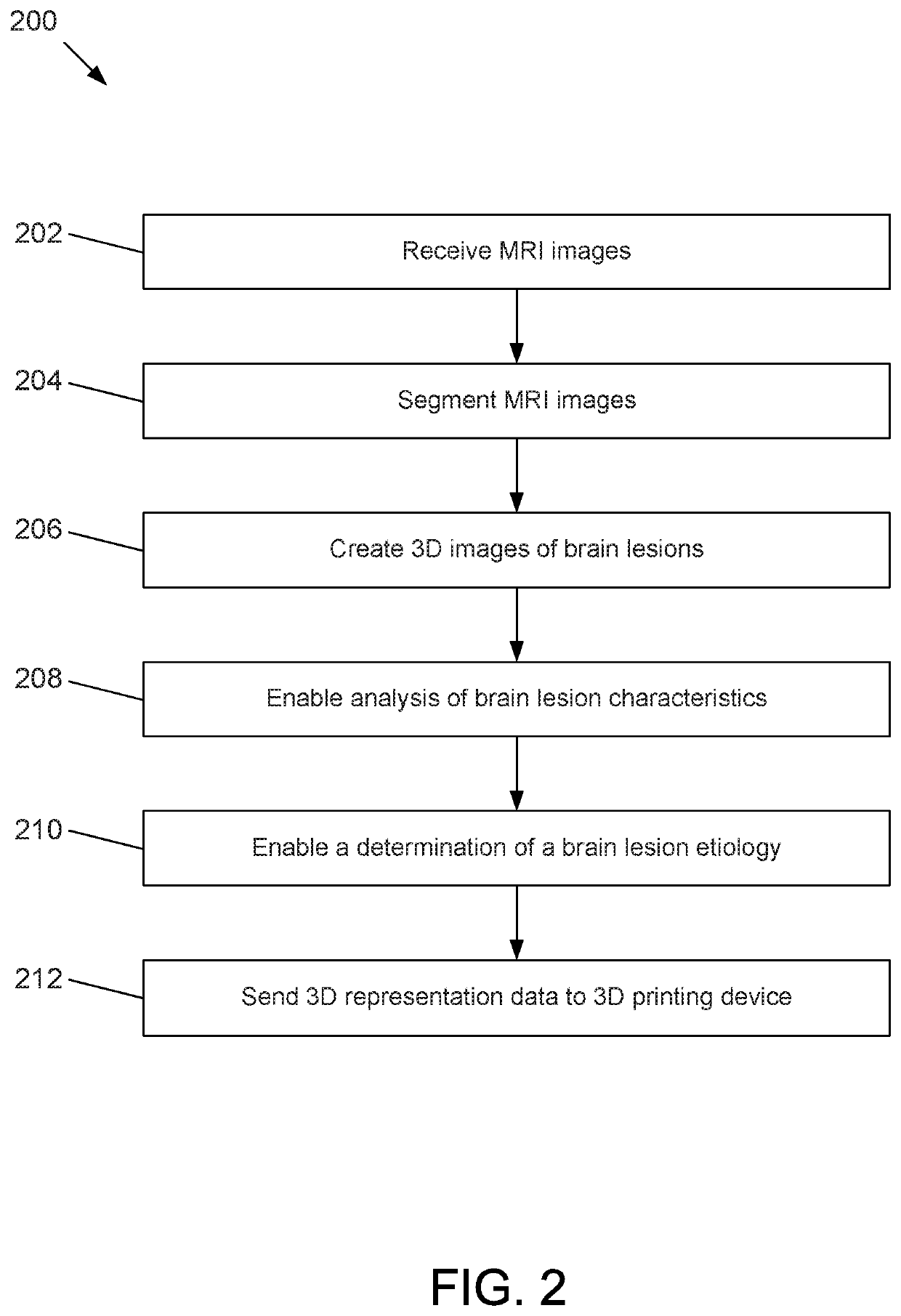Methods, apparatuses, and systems for creating 3-dimensional representations exhibiting geometric and surface characteristics of brain lesions
a technology of geometric and surface characteristics and brain lesions, applied in the field of brain lesions geometric and surface characteristics, can solve the problems of heterogeneity of lesions, difficult to accurately assess the size, volume, and surface area of lesion, and the inability to effectively apply the existing dissemination criteria. , to achieve the effect of redefining the shape and surface features, accurate assessment of lesion size, volume and surface area
- Summary
- Abstract
- Description
- Claims
- Application Information
AI Technical Summary
Benefits of technology
Problems solved by technology
Method used
Image
Examples
example experimental
[0056 results are depicted in FIGS. 6-9. In the embodiment shown in FIG. 6, results 600 may include one or more 2D MRI images 602, one or more 3D MRI images 604, one or more 3D brain lesion images 606, and one or more 3D physical brain lesion representations 608. In the embodiment shown, one or more 2D MRI images 602 are axial MRI FLAIR images of the brain, one or more 3D MRI images 604 are MIP images, one or more 3D brain lesion images 606 are orthographic images, and one or more 3D physical brain lesion representations 608 are 3D printed regions of interest from four unique patients. In the embodiment shown, images A-D exhibit asymmetric primary lesion characteristics, images E-H exhibit symmetric primary lesion characteristics, images I-L exhibit complex surface morphology primary lesion characteristics, and images M-P exhibit simple surface morphology primary lesion characteristics.
[0057]In the embodiment shown in FIG. 7, results 700 may include one or more 2D MRI images 702, on...
PUM
 Login to View More
Login to View More Abstract
Description
Claims
Application Information
 Login to View More
Login to View More - R&D
- Intellectual Property
- Life Sciences
- Materials
- Tech Scout
- Unparalleled Data Quality
- Higher Quality Content
- 60% Fewer Hallucinations
Browse by: Latest US Patents, China's latest patents, Technical Efficacy Thesaurus, Application Domain, Technology Topic, Popular Technical Reports.
© 2025 PatSnap. All rights reserved.Legal|Privacy policy|Modern Slavery Act Transparency Statement|Sitemap|About US| Contact US: help@patsnap.com



